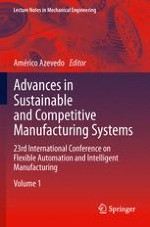2013 | Buch
Advances in Sustainable and Competitive Manufacturing Systems
23rd International Conference on Flexible Automation & Intelligent Manufacturing
herausgegeben von: Américo Azevedo
Verlag: Springer International Publishing
Buchreihe : Lecture Notes in Mechanical Engineering
